The Treasury Department’s updated official custody figures show us nothing unexpected. As usual, the TIC numbers are useful more so in corroboration of what contemporary analysis had already described. In the case of March 2016, we find just the sort of apparent reduction in “dollar” pressure that matches observation of general global conditions after February. Total net “flow” was +$64.7 billion, up from +$28.9 billion in February and -$33.4 billion in January. That is consistent with an end to general global liquidation via the eurodollar system at and around February 11.
Improvement is, of course, a relative description which in this context only suggests absence of further liquidity pressure rather than an actual rebound. On the official side, despite a seemingly much more placid funding environment, “selling UST’s” continued in March if at a reduced pace. The net change in official holdings of treasury securities was -$18.3 billion, better than the -$40.2 billion in February and -$56.3 billion in January but not fundamentally different. The official sector has been net negative in UST’s for ten consecutive months and 15 out of the past 16 under the “rising dollar.”
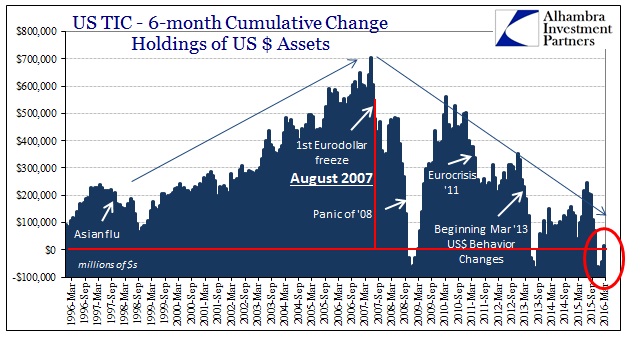
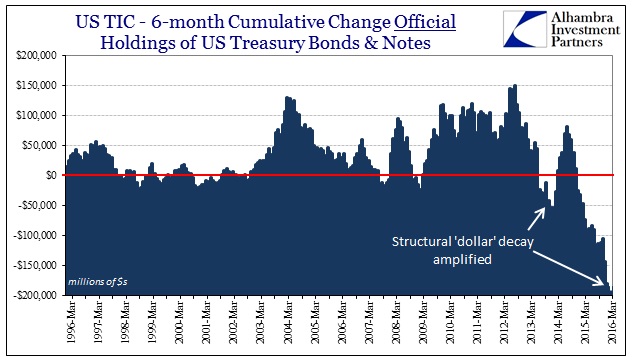
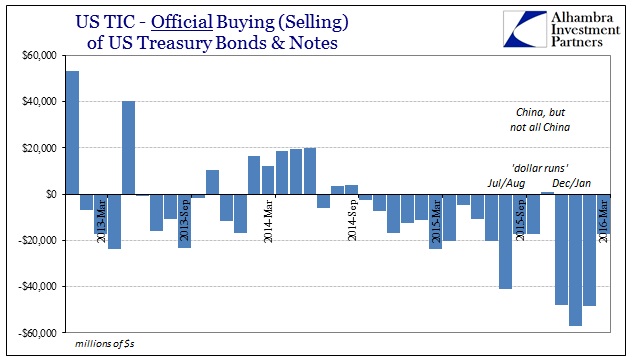
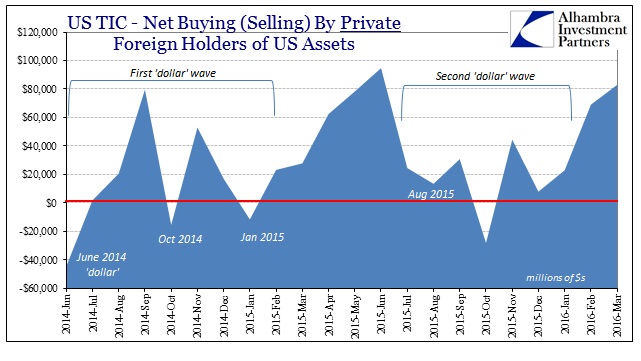
Collectively it suggests that though the liquidations ended, the “rising dollar”, really the manifestation of the heightened decay in the global eurodollar system, did not. We can further observe that process throughout the rest of the TIC data. Starting with reported bank dollar liabilities, for Q1 as a whole the decline was only $26.8 billion as compared to -$66.1 billion in Q4. As usual, the relevant figure for global funding disorder is the quarter before, meaning the lower pace of reduction in Q1 suggests the general calmness of Q2 so far (whereas the much heavier retreat in Q4 2015 prefigured what we observed in January and early February).
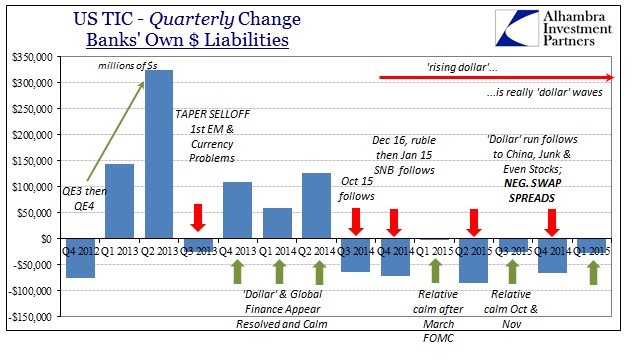
While that gives us an indication of the immediate changes and relative conditions quarter-to-quarter, the longer-term view again remains undisturbed. Banks have been consistently shrinking their dollar liabilities even if the exact timing of it is lumpy and uneven enough to create these discrete and intense “dollar” drains.












Leave A Comment